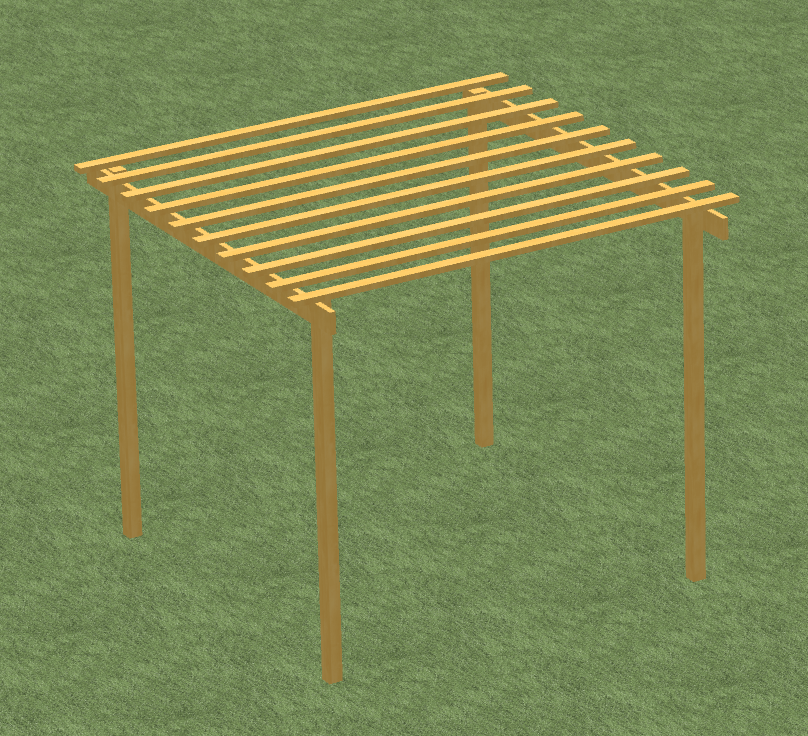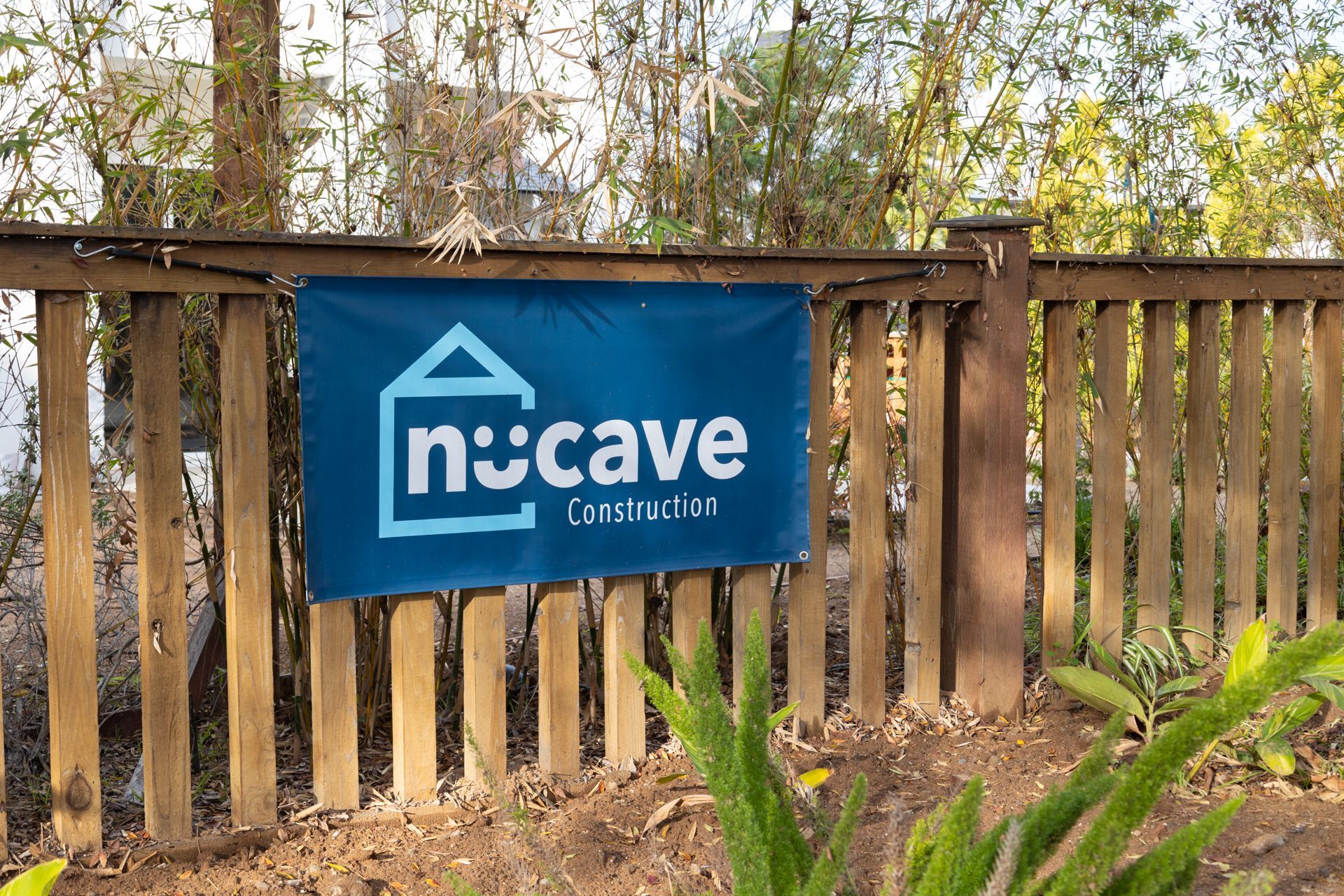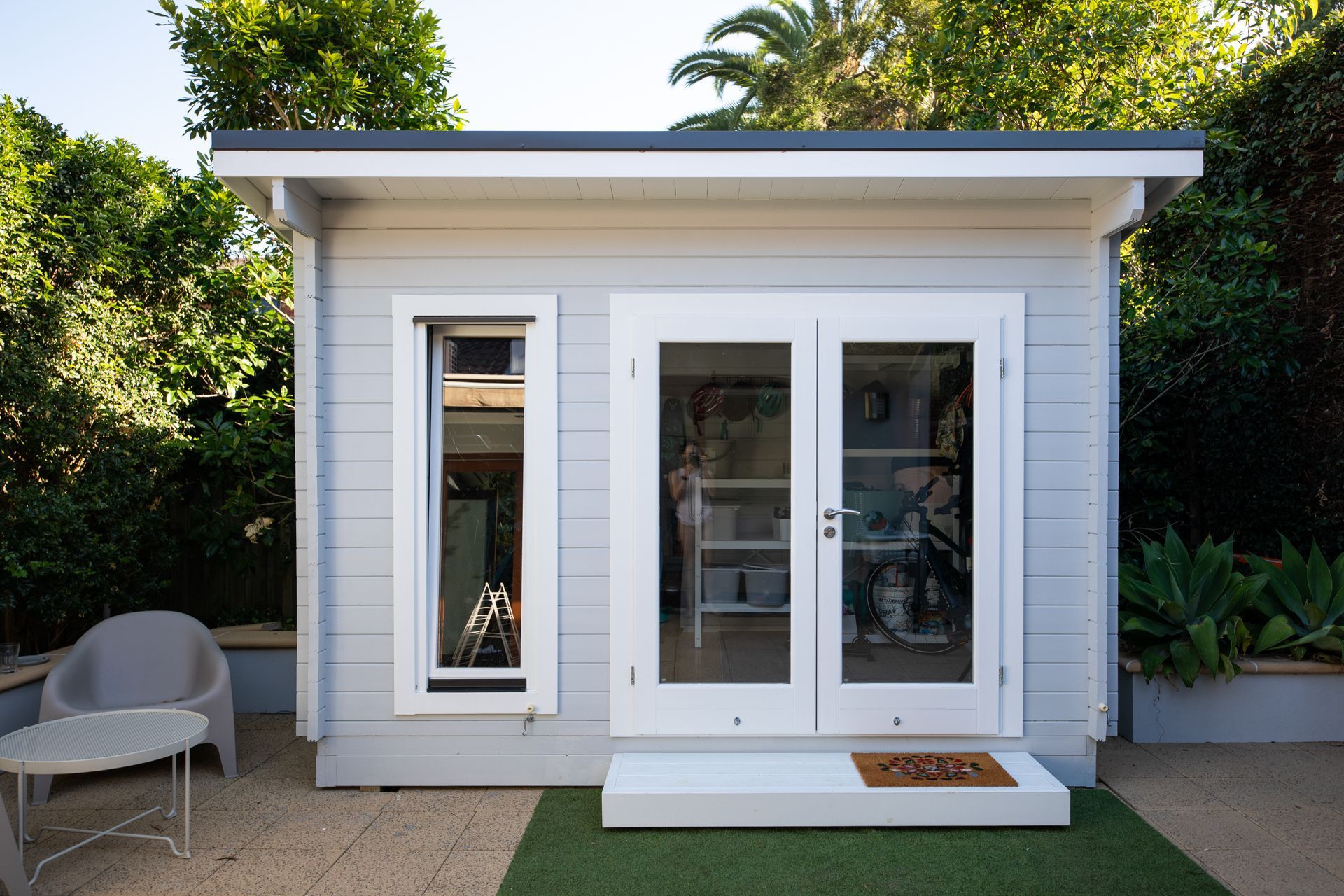Do-It-Yourself Pergola
Mar 14, 2018
How To Build A Wood Pergola (Without a Saw!!!)
A pergola is a great way to enjoy your backyard and give your outdoor space some added design. If you need a custom pergola in Vista, CA visit this page here. We service San Diego County and surrounding areas.
If your yard permits you might consider a Costco pergola. You can get a basic Costco pergola kit for around $1000, or if you’re handy enough and have the time, you might just build one yourself. Here’s a step-by-step guide.
When choosing wood for your Do-it-Yourself Pergola make sure your boards are as straight as possible, avoiding boards with the following problems.

What You’ll Need:
- 4 – 4x4x10 – pressure treated posts
- 2 – 2x6x10 – common wood, ex. Douglas Fir
- 8 – 2x4x10 – common wood, ex Douglas Fir (at least 8, more if sufficient shade is required)
- 4 – Bags of Concrete
- 4″ Lag screws and washers (4)
- 3″ exterior screws
- Exterior paint
- Shovel
- Bucket of Water

Directions:
- Measure where to put your pressure treated posts first. They will be 8 feet apart on center.
- Dig a 12 inch square hole around the middle of where your post will be set. Dig a minimum of 18 inches deep.
- Center and level post on both verticals. Make sure all posts have the same vertical height from the ground up, or very close.
- Follow directions on cement bag for water/mix ratio. Pour cement and water into hole and around post. Poke a few holes in the cement to be sure the water drains properly. Hold post until it is sturdy enough to stand on its own.
- Decide what kind of cut ends or corbels you want for the cross beams. Click here for some examples. For this project we are just using the straight-cut ends from the factory cuts. No saws needed!
- When the cement has dried COMPLETELY and the posts are sturdy, you are ready to fasten the beams. You’ll want to install 2 parallel beams so you can set the next pieces on top of those. Use another pair of hands to help you hold each beam up and into place. There should be about 8″ of hangover on each side. Use a level and fasten with a lag screw and washer into the 4×4.
- Now evenly measure and space out the next row of wood pieces for the roof. The more wood you use, the more shade your pergola will provide. Fasten wood with 3″ exterior screws. See image above.
- If all has went well, you should be out of the building phase, and into finishing. Paint your pergola with a primer first and 2 coats of paint for maximum protection from the elements. Allow proper drying to occur between each coat.

19 Apr, 2024
Creating a custom home is an exciting journey that turns your vision into a reality. This process involves crucial decisions, not least selecting the right architect and builder. These professionals will design and construct your home and guide you through complex processes involving zoning laws, design choices, and material selections. Here's how to ensure you partner with the right architect and builder who aligns with your vision, needs, and communication style. Understanding the Roles: Architect vs. Builder Before diving into how to choose these professionals, it’s essential to understand their roles. An architect is responsible for the conceptual and schematic design of your home. They create the house's layout, look, and feel, ensuring that the structure is safe, functional, and aesthetically pleasing. On the other hand, a builder takes these plans and brings them to life. They manage the construction site, coordinate subcontractors, and handle the day-to-day work necessary to build the home. 1. Experience Matters Choose an Architect with Relevant Experience Look for an architect with experience in the home style you want. Whether you're interested in a modern, minimalist home or a traditional, craftsman-style house, finding an architect with specific experience in that area is crucial. Review their portfolio to see examples of past projects. This not only gives you an idea of their capability but also their design aesthetics. Select a Builder Familiar with Your Architect’s Designs Choosing a builder who has previously worked with your chosen architect or is familiar with their style and expectations is beneficial. This familiarity can smooth the construction process and ensure a better translation of design into reality. 2. Style Compatibility Your home should reflect your personal style and lifestyle needs. When interviewing architects, discuss your vision and check their enthusiasm for your ideas. It's important that the architect is not just capable but also excited about your project. For builders, ensure they respect the architectural vision and can execute the designs with the materials and finishes you prefer. 3. Communication is Key Establishing Clear Lines of Communication The ability to communicate effectively with your architect and builder is paramount. They should be responsive, attentive, and transparent. During initial meetings, observe how they handle your queries. Do they listen and provide clear, understandable answers? Are they patient and open to discussions? Regular Updates and Availability Check how the builder manages communication on the job site. They should offer regular updates and be available to address any concerns you might have throughout the project. 4. Check References and Reviews Ask for and follow up on references for both the architect and the builder. Speaking to past clients can provide insight into their reliability, efficiency, and flexibility. Online reviews and testimonials can also be telling. Pay attention to how they handled problems and their clients' overall satisfaction with the project. 5. Alignment of Values Finally, your architect and builder must align with your values concerning sustainability and workmanship. If eco-friendly building is important to you, your team should prioritize this in their materials, building practices, and vendors. Conclusion Choosing the right architect and builder for your custom home is more than evaluating skills—it's about finding professionals who share your vision, understand your style, and communicate effectively. Take your time, research, and build a relationship with your team. After all, creating a custom home is not just constructing a building; it's bringing your dream home into existence.


